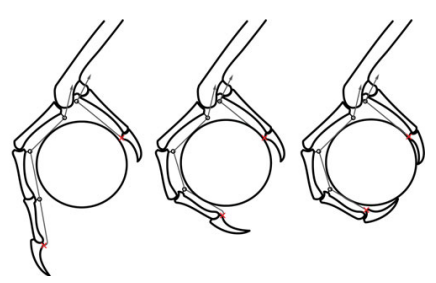|
|
Avian Grasping |

|
|
The grasping capability of birds' feet is a hallmark of their evolution, but the mechanics of avian foot function are not well understood. Two evolutionary trends that contribute to the mechanical complexity of the avian foot are the variation in the relative lengths of the phalanges and the subdivision and variation of the digital flexor musculature observed among taxa. In our work, we modelled the grasping behaviour of a simplified bird foot in response to the downward and upward forces imparted by carrying and perching tasks, respectively. Our research sheds light on the relative roles of variation in phalanx length and digit flexor muscle distribution in an integrative, mechanical context.
Sample Publication:
Spencer B. Backus, Diego Sustaita, Lael U. Odhner and Aaron M. Dollar
Mechanical Analysis of Avian Feet: Multiarticular Muscles in Grasping and Perching, Royal Society Open Science, vol. 2(2), 140350, 2015.
BiologicalHands
2015
All Biological Hands Publications >>
|